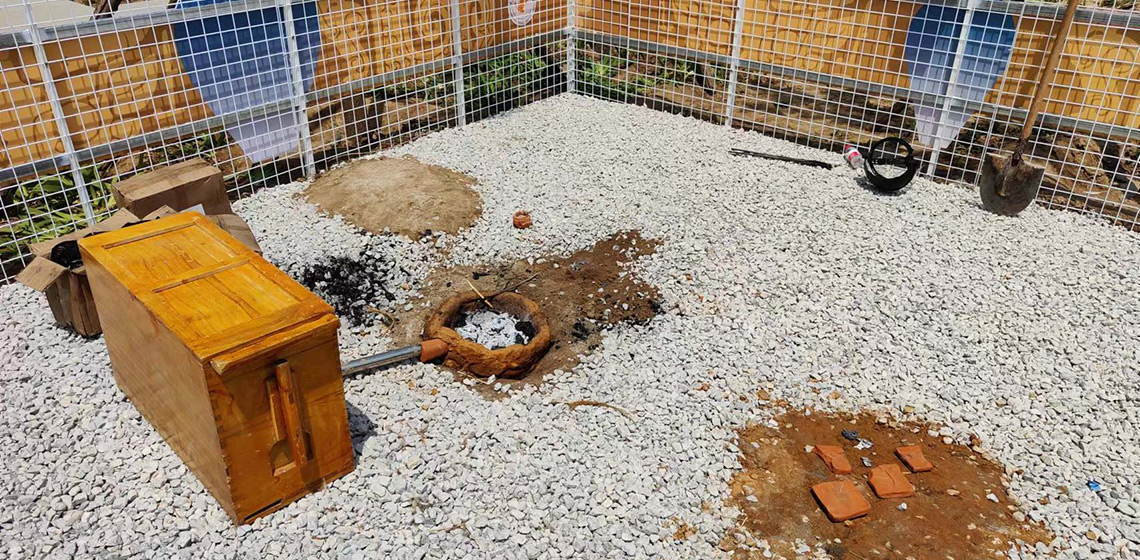The content is published under a Creative Commons Attribution Non-Commercial 4.0 License.
Unreviewed Mixed Matters Article:
Experimental Archaeological Factors of Primary Education in China

As archaeology in China has developed, experimental archaeology, as a research method of archaeology, has attracted more and more attention from Chinese archaeologists. The strength of a discipline's development is reflected not only in academic contributions but also in how it enhances the lives of the public. The experimental archaeology museum in Baoding, China attempts to integrate experimental archaeology into primary education and at the same time to create a new way of participating in archaeological work in social and cultural education.
As a research method of archaeology, experimental archaeology has attracted the attention of archaeologists in China in recent years. In order to better promote experiment archaeology in China, in 2020 Dr Bangcheng Tang, then a lecturer at Baoding University, and Ms Hongjie Wang, the principal of Baoding Qianweilu Primary School, took advantage of the renovation of an old boiler room to jointly plan and build a museum with the theme of experimental archaeology, which was to be built on the campus of the primary school.
Utilizing the museum’s space and collections, experimental archaeology is integrated into the educational curriculum of primary schools, and primary school students are encouraged to understand and learn about ancient Chinese history and culture from a new perspective.
The museum on the theme of experimental archaeology was completed after three years in February 2023 and officially began its work in May (See Figure 1). The museum consists of an experimental archaeological area, a collection display area, a digital display area for cultural relics and a reading area.
The experimental archaeological area is divided into two parts: indoor and outdoor. The outdoor part is mainly used to carry out experiments that generate flames and high temperatures (See Figure 2 and 3), and experimental archaeologists lead students in carrying out reconstruction experiments on ancient Chinese bronzes. This allows students to learn about ancient Chinese metallurgical technology through hands-on practice (See Figure 4). The interior part is mainly used to teach the experimental reconstruction of ancient Chinese pottery and Nephrite manufacture (See Figure 5).
The collection display area serves the experimental archaeological area by preserving the experimental products of the teaching activities and is used for display and education (See Figure 6). In addition, some bronzes and pottery from archaeological excavations have also been selected for display in the collection display area (See Figure 7). Students can visit the collection display area, which is good for linking the experimental archaeological results with excavated artefacts. This helps students to have a deeper understanding of research methods and the significance of experimental archaeology. It also makes reproducing history through artefacts a more intuitive experience.
The digital display area comprises intelligent robots and 3D screens that do not require glasses, facilitating the students’ independent learning. Students can visit the museum led by robots (See Figure 8) or look up ancient Chinese artefacts on a glasses-free 3D screen (See Figure 9). The reading area has many books on archaeological and historical topics for students to read outside of school hours (See Figure 10).
The construction of an experimental archaeology museum near Beijing, the capital of China, was not easy but will be very significant for primary school education, and will attempt to integrate experimental archaeology into China’s primary education. In the future, we will continue to work hard to increase the influence of experimental archaeology in China.
Acknowledgements
Special thanks to Dr Roeland Paardekooper of EXARC for his interest in the development of experiment archaeology in China, for his support in my experiment archaeology work in China, and Maura Stefani of EXARC for her assistance in communication. I would also like to express my gratitude to the Department of Archaeology of the University of Sheffield and Dr Yvette A. Marks, who has given me a lot of advice and support during the three years of building the museum. The achievement of one thing is the result of the help of many parties. Therefore, I would also like to thank Professor Haichao Li of Sichuan University, Professor Jianfeng Cui of Peking University, Associate Professor Xiaokun Wang of Renmin University of China and Professor Meng Hong of Hebei University for their support and assistance in carrying out experimental archaeology in China.
Keywords
Country
- China

